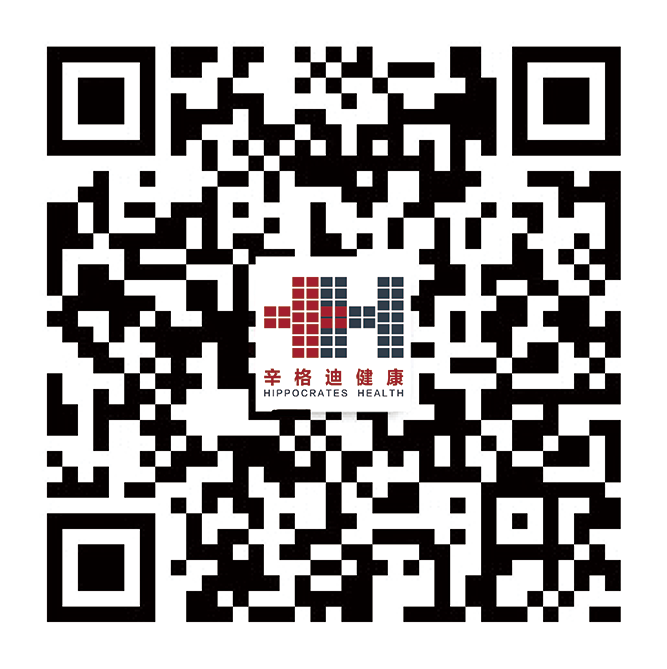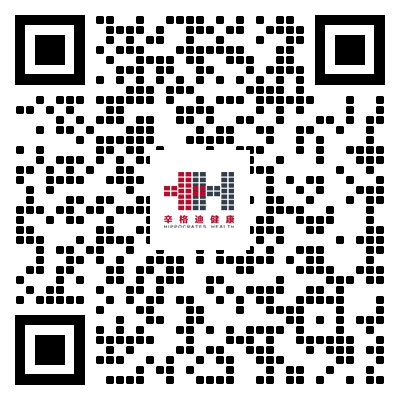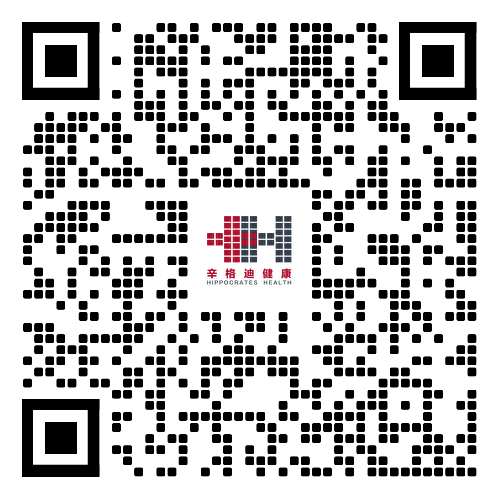Pharmacovigilance Management System (PVS) Project of Nanjing Mainovay Pharmaceutical Technology Co., Ltd.
I. Project Overview
Nanjing Mainovay Pharmaceutical Technology Co., Ltd. (hereinafter referred to as "Mainovay") is an R&D and supply enterprise in the consumer pharmaceutical sector, providing a premium product portfolio for mental diseases and disfiguring diseases. Founded in February 2021, the company is headquartered in Nanjing.
Mainovay has a core team with over 10 years of collaborative experience, which has led the R&D of multiple new drugs and their registration filings in China and the United States. The company’s technical feature lies in integrating molecular structure innovation with novel drug delivery systems, enabling it to more efficiently translate original discoveries into new drugs with better clinical efficacy, higher safety, and improved patient experience—ultimately offering patients better treatment options.
Mainovay has a comprehensive new drug R&D team covering all stages of new drug development, including early drug discovery, drug screening, druggability research, preclinical evaluation, clinical research, pharmaceutical development, and quality research. The company has established professional departments such as the Medicinal Chemistry Department, Synthetic Process Development Department, Formulation Department, Quality Department, Biological Evaluation Department, Clinical Operations Department, Medical Department, Intellectual Property Department, Registration Department, and Project Management Department, and has built a sound drug R&D management system.
Mainovay owns an advanced phenotype-based drug screening platform for disfiguring diseases. Based on cell models and/or animal disease models, this platform screens for active ingredients targeting specific disfiguring diseases by observing drug-induced changes in organism phenotypes, and can further study the molecular mechanism of action. In addition, the company has built a total synthesis technology platform for complex natural small molecules, and has advanced multiple total-synthesized complex natural small molecules or their structural modification products to the clinical and industrialization stages.
The company also has strong expertise in novel drug delivery systems, having established R&D platforms for various novel drug delivery systems such as complex injectables, complex topical formulations, and complex oral formulations. For the same candidate molecule, the company can simultaneously explore various potential developable dosage forms, and quickly identify the optimal drug delivery method using its screening and evaluation platforms.
II. Project Background
With the official implementation of China's newly revised Drug Administration Law in December 2019 and the release of the Good Pharmacovigilance Practice (GVP) (Announcement No. 65 of 2021) on May 7, 2021, China officially entered the era of pharmacovigilance. Pharmacovigilance activities revolve around two core pillars:
- Pharmacovigilance system construction: Requiring marketing authorization holders (MAHs) to establish, operate, and maintain a pharmacovigilance system.
- Drug risk management: Requiring MAHs to monitor, identify, assess, and control drug risks.
- Typical deficiencies frequently mentioned in official reports on GVP inspections include:
- Inadequate pharmacovigilance system: Enterprises may fail to establish a sound pharmacovigilance system for monitoring, identifying, assessing, and controlling adverse drug reactions (ADRs) and other drug-related harmful reactions.
- Insufficient participation of professional managers: Enterprises may fail to ensure full participation of pharmacovigilance managers in business activities, leading to incomplete implementation of pharmacovigilance work and inadequate drug safety management.
- Poor quality of pharmacovigilance reports: Enterprises may fail to attach sufficient importance to pharmacovigilance reports (e.g., individual case reports, Development Safety Update Reports (DSURs), Periodic Safety Update Reports (PSURs)), resulting in incomplete, low-quality reports that fail to meet regulatory requirements.
- Inadequate risk communication: Pharmaceutical enterprises may fail to collaborate effectively with medical institutions, pharmaceutical manufacturers, and pharmaceutical distributors in conducting pharmacovigilance activities, leading to insufficient risk communication.
- Inadequate supervision of innovative drugs and improved new drugs: For products such as innovative drugs and improved new drugs, enterprises may fail to strengthen post-marketing monitoring based on the safety characteristics of the products, or fail to enhance the awareness of medical institutions, manufacturers, distributors, and patients in reporting suspected ADR information.
- To support the implementation of its pharmacovigilance work, Mainovay adopted the Xingdi Pharmacovigilance Management System (Pharmacovigilance Management System, PVS; Jingtai®, VigiTrust®).
- Independently developed by Xingdi, the PVS is designed for Marketing Authorization Holders (MAHs) and professional Contract Research Organizations (CROs), including pharmaceutical companies, vaccine enterprises, and medical device companies. It supports the entire business process of compliant and efficient collection, processing, reporting, and analysis of adverse events, covering both the clinical trial phase and post-marketing phase of products.
- Compliant with the ICH E2B (R3) standard, the PVS enables electronic transmission of Individual Case Safety Reports (ICSRs) to various regulatory authorities via two methods: real-time Gateway-to-Gateway submission and E2B R3 XML file submission through the "Applicant Window". By applying this pharmacovigilance management system, Mainovay can conduct more professional and systematic drug safety management, ensuring the safety and efficacy of drugs while meeting regulatory requirements and market demands.
III. Specific Measures
(I) Overall Planning
Based on the Aotai Platform, Xingdi PVS integrates a pharmacovigilance regulatory database, pharmacovigilance system documents, industry-related training materials, quality management systems and processes, electronic signatures, and SAE assistants. As a comprehensive digital pharmacovigilance solution, it helps enterprises quickly establish a pharmacovigilance operation system that complies with national regulations and regulatory requirements. Specifically, Xingdi PVS assists enterprises in building a comprehensive digital pharmacovigilance management platform (as outlined below):
Based on the established Jingtai System, the platform’s functions in signal detection, big data analysis, and business automation can be further enhanced, using advanced technologies to continuously empower pharmaceutical enterprises in their pharmacovigilance operations.
(II) Business Model
Xingdi Jingtai System includes multiple functional modules. Enterprises can select different modules based on requirements such as pharmacovigilance system construction, pre-marketing/post-marketing business activities, and signal detection, and implement them in phases. As a standardized SaaS product, the Jingtai System has a short implementation cycle (2-4 weeks), enabling it to quickly respond to customers’ system construction and GVP business needs.
By implementing the Xingdi Pharmacovigilance Management Solution (PVS), Mainovay addresses the complex regulatory requirements of the pharmaceutical industry and helps the company comprehensively enhance its pharmacovigilance management capabilities while meeting industry compliance requirements through the following measures:
- Establish a sound pharmacovigilance system: In accordance with the Good Pharmacovigilance Practice (GVP), the enterprise shall establish and continuously improve a pharmacovigilance system to cover the monitoring, identification, assessment, and control of ADRs and other drug-related harmful reactions throughout the entire drug lifecycle.
- Personnel training and qualification: The enterprise shall allocate a sufficient number of full-time personnel with appropriate qualifications and conduct pharmacovigilance training to ensure relevant personnel possess the necessary knowledge and skills.
- Standardize pharmacovigilance activities: The enterprise shall standardize pharmacovigilance activities, including monitoring and reporting of ADR information, risk identification and assessment, and risk control, to comply with the requirements of the National Medical Products Administration (NMPA).
- Quality management and internal audit: The enterprise shall establish a quality assurance system, conduct regular internal audits to assess the suitability, adequacy, and effectiveness of the pharmacovigilance system, and take corrective and preventive actions for identified issues.
- Risk communication: The enterprise shall collaborate with medical institutions, pharmaceutical manufacturers, and pharmaceutical distributors in conducting pharmacovigilance work and conduct effective risk communication when necessary.
- Comply with international standards: With the internationalization of the pharmaceutical industry, the enterprise shall also comply with international standards (e.g., ICH E2B (R3)) to ensure the compliance of Individual Case Safety Report (ICSR) submissions.
- The implementation of PVS not only improves the efficiency and quality of pharmacovigilance management but also helps the enterprise establish a sound pharmacovigilance management system, thereby enhancing the drug safety and compliance capabilities.
(III) Technical Architecture
Xingdi PVS is one of the core solutions on the Xingdi Aotai Digital Platform. Co-developed by Xingdi’s industry experts and IT specialists, the Aotai Platform takes "Quality and Compliance Expert" as its management philosophy and market positioning. It helps enterprises improve their quality and compliance levels, meet industry supervision requirements, enhance management capabilities, and accelerate the market launch of more safe, effective, and high-quality products.
Applications on the Aotai Platform can be customized to an enterprise’s quality system based on its needs. The built-in configuration tools already include multiple quality management functions, eliminating the need for customization or programming to implement certain special processes. Trained personnel can quickly customize forms, decision trees, and dashboards to meet specific business needs.
The Aotai Platform’s superior design ensures users can quickly access large volumes of records and data, thereby improving work efficiency:
- "Intelligent loading" of forms minimizes loading time.
- Frequently used data is cached to maximize network bandwidth utilization.
- Data is stored in an efficient manner, and the distributed architecture is optimized for server expansion.
- Standard APIs significantly improve system access efficiency, including:
- Automated email notifications, SMS notifications, and dashboard alerts integrated into workflows, greatly reducing the risk of missing tasks or approvals.
- Background task submission and management mode allow users to perform other tasks simultaneously.
- A standard intermediate service layer supports integration with any third-party system, facilitating data exchange between Aotai and other application systems.
IV. Construction Achievements
(I) Enterprise Achievements
Hippocrates PVS not only helps enterprises quickly establish a pharmacovigilance management system but also supports pharmaceutical enterprises in conducting comprehensive pharmacovigilance activities, including:
- Entry of Individual Case Safety Reports (ICSRs) into the system;
- Quality control of ICSRs;
- Medical review of ICSRs and drafting of Serious Adverse Event (SAE) descriptions;
- Drafting of post-marketing focused surveillance research protocols;
- Compilation of focused surveillance reports;
- Compilation of clinical trial reports;
- Retrieval of adverse events in Chinese and English literature;
- Formulation of risk control/management strategies.
- Based on the Aotai Platform, the solution integrates a pharmacovigilance regulatory database, pharmacovigilance system documents, industry-related training materials, quality management systems and processes, electronic signatures, and SAE assistants. As a comprehensive digital pharmacovigilance solution, it helps enterprises quickly build a pharmacovigilance operation system that complies with national regulations and regulatory requirements.
- Hippocrates PVS enables enterprises to establish a comprehensive digital management model based on "Jingtai®", meeting the increasingly stringent regulatory requirements faced by enterprises.
(II) Social Achievements
- Ensuring enterprises meet inspection and industry supervision requirementsThe solution helps enterprises build a digital management system to meet industry supervision requirements. The PVS covers the entire workflow of pharmacovigilance work, with a design compliant with domestic and international standards to meet regulatory requirements. Built-in audit trails and query management functions support enterprises in meeting inspection and audit requirements.
- Intelligent data collection and data analysisThe system features convenient and fast data collection (supporting both PC and mobile terminals), process-oriented and guided collection (easy to learn), and permanent data retention. It can generate multi-dimensional reports covering drugs, clinical trials, regions, and patients, enabling comprehensive data analysis by day, week, month, or full cycle. It also provides real-time data query and rich graphical report presentation functions. Additionally, it supports rapid generation of PSURs and DSURs with guided operations and automated report generation, featuring short report cycles and high efficiency.
- Improving drug safety and ensuring the public has access to safe medicationsXingdi PVS enables timely monitoring and identification of ADRs and assessment of drug safety, thereby reducing the occurrence of ADRs and safeguarding public drug use safety. By analyzing ADRs, pharmaceutical enterprises can identify issues in drug production and use, further improving drug quality and efficacy. The drug safety information provided by the pharmacovigilance system helps doctors and pharmacists make more rational drug use decisions, enhancing the safety and efficacy of clinical drug use. Through monitoring and analysis by the pharmacovigilance system, drug risks can be identified and controlled in a timely manner, reducing harm to patients from ADRs and protecting patient rights and interests.
- Realizing greater public health value Hippocrates PVS improves the efficiency of drug safety information collection and analysis, helping pharmaceutical enterprises and regulatory authorities allocate resources more rationally and enhance work efficiency. It enables enterprises to better understand the real-world performance of drugs, providing feedback for drug R&D and promoting pharmaceutical innovation. It helps identify and control drug safety incidents in a timely manner, reducing the occurrence of public health incidents and improving public health standards. The application of PVS also helps pharmaceutical enterprises comply with international pharmaceutical regulatory standards, promoting international pharmaceutical cooperation; it supports enterprises in meeting national and international regulatory requirements, safeguarding drug safety, and protecting public health.
V. Associated Solutions
- Pharmacovigilance Solution (PVS)
VI. Associated Projects
- Pharmacovigilance Management System (PVS) Project of Hangzhou Puri Life Technology Co., Ltd.
- Pharmacovigilance Management System (PVS) Project of Beijing Northland Biotechnology Co., Ltd.
- Pharmacovigilance (PVS) Project of Sinovac Biotech Co., Ltd.



